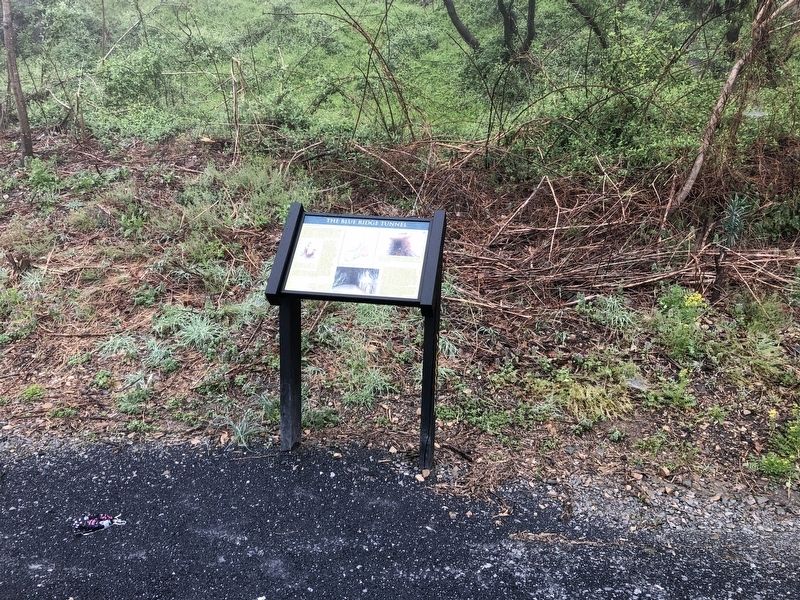The Laborers
The Blue Ridge Tunnel
In early 1850, hundreds of Irish famine immigrants poured into the counties of Albemarle, Nelson and Augusta. Accompanied by relatives, they came to build the Blue Ridge Railroad and its four tunnels. Those working in the Blue Ridge Tunnel erected shanties—some housing multiple families—near both portals. Men laboring on the remaining tunnels or along the tracks crowded with their families into rented houses on the descending slopes of Rockfish Gap.
For all, it was a difficult life. Round-the-clock explosions of black gunpowder in the tunnels created almost unbearable noise and smoke. Death by a faulty detonation or falling rock was a constant risk. Pay for floorers, who cleared debris after blasts, began at $.75 a day. The figure rose to $1.12 ½ after a strike in 1853, while pay for headers and blasters rose to $1.25 a day. Blacksmiths and stonemasons earned $1.30 to $2.00 a day. Wages rose again after more strikes, but this meant surviving with no pay for unpredictable period of time. A cholera epidemic roared through the shanties in 1854, taking the lives of thirty-three people. In all 190 Irish on the Blue Ridge Railroad line died from disease, infection, or work accidents.
Three slaveholders leased the labor of thirty-three men for toil in the Blue Ridge Tunnel in 1854. The enslavers' contract with
the state specified that the men must not be allowed near gunpowder loading or blasting. Most of the men were floorers earning $1.12 ½ a day—all payable to the enslavers. Meanwhile several hundred more hired-out men endured backbreaking assignments on the line. They cleared land, prepared track beds, hauled stones for culverts, broke rock for ballast, put riprap in place, fired bricks, and shored up embankments. Three enslaved men died while laboring on the Blue Ridge Railroad.
A total of about 850 Irish men and boys worked in the Blue Ridge Tunnel during its construction. Approximately 50 local men joined them now and again, but payroll records show that most left after a few months. Elsewhere on the line, however, the Blue Ridge Railroad employed some local men for years.
Erected 2020 by Nelson County Parks & Recreation.
Topics. This historical marker is listed in these topic lists: African Americans • Industry & Commerce • Railroads & Streetcars • Settlements & Settlers. A significant historical year for this entry is 1850.
Location. 38° 1.831′ N, 78° 50.985′ W. Marker is in Afton, Virginia, in Nelson County. Marker is on Blue Ridge Tunnel Trail, 0.4 miles west of Afton Depot Lane, on the right when traveling west. Touch for map. Marker is at or
Other nearby markers. At least 8 other markers are within walking distance of this marker. The Blue Ridge Railroad (about 600 feet away, measured in a direct line); Crozet Blue Ridge Tunnel (approx. 0.2 miles away); Greenwood-Afton Rural Historic District (approx. ¼ mile away); Flight of Richard C. duPont (approx. ¼ mile away); Rockfish Gap Meeting (approx. ¼ mile away); Claudius Crozet (approx. ¼ mile away); Virginia's Nineteenth-Century Transportation Challenges (approx. 0.4 miles away); Nelson County / Augusta County (approx. 0.4 miles away). Touch for a list and map of all markers in Afton.
Credits. This page was last revised on April 11, 2021. It was originally submitted on April 11, 2021, by Devry Becker Jones of Washington, District of Columbia. This page has been viewed 250 times since then and 22 times this year. Photos: 1, 2. submitted on April 11, 2021, by Devry Becker Jones of Washington, District of Columbia.

